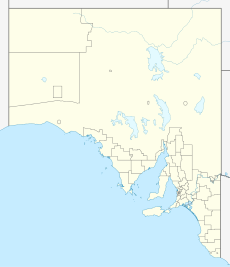속성-값 체계
Attribute–value system속성-값 시스템은 "속성"("속성", "사전", "특징", "차원", "특성", "필드", "헤더" 또는 "독립 변수"를 지정하는 열과 "객체"("엔티티")를 지정하는 "행"으로 구성된 기본 지식 표현 프레임워크입니다."변수", "변수", "변수", "변수", 또는 "의존 변수".따라서 각 테이블 셀은 특정 객체의 특정 속성 값('상태'라고도 함)을 지정합니다.
속성-값 시스템의 예
다음으로 속성값 시스템의 예를 나타냅니다.10개의 객체(행)와 5개의 피쳐(열)를 나타냅니다.이 예에서는 테이블에는 정수 값만 포함되어 있습니다.일반적으로 속성-값 시스템은 숫자 또는 기타 모든 종류의 데이터를 포함할 수 있습니다.속성-값 시스템은 속성-값 시스템의 각 특징이 단순히 존재하거나 존재하지 않는 것이 아니라 값의 범위(예를 들어 {0,1,2} 도메인을 가진 아래의 특징 P1)를 가질 수 있다는 점에서 단순한 "기능 목록" 표현과 구별됩니다(Barsalou & Hale 1993).
속성-값 시스템 예시 물건 P1 P2 P3 P4 P5 O1 1 2 0 1 1 O2 1 2 0 1 1 O3 2 0 0 1 0 O4 0 0 1 2 1 O5 2 1 0 2 1 O6 0 0 1 2 2 O7 2 0 0 1 0 O8 0 1 2 2 1 O9 2 1 0 2 2 O10 2 0 0 1 0
속성 가치 체계에 사용되는 기타 용어
속성-가치 시스템은 여러 문헌에 걸쳐 널리 퍼져 있으며, 다음과 같은 다양한 이름으로 논의되어 왔습니다.
- 플랫 데이터
- 스프레드시트
- 속성-가치 체계(1996년 Ziarko & Shan)
- 정보 시스템 (Pawlak 1981)
- 분류 체계 (1998년 Ziarko)
- 지식표현시스템(1986년 Wong & Ziarko
- 정보표 (Yao & Yao 2002)
「 」를 참조해 주세요.
레퍼런스
- Barsalou, Lawrence W.; Hale, Christopher R. (1993). "Components of conceptual representation: From feature lists to recursive frames". In Iven Van Mechelen; James Hampton; Ryszard S. Michalski; Peter Theuns (eds.). Categories and Concepts: Theoretical Views and Inductive Data Analysis. London: Academic Press. pp. 97–144. ISBN 9780127141756.
- Pawlak, Zdzisław (1991). Rough sets: Theoretical Aspects of Reasoning about Data. Dordrecht: Kluwer.
- Ziarko, Wojciech; Shan, Ning (1996). "A method for computing all maximally general rules in attribute–value systems". Computational Intelligence. 12 (2): 223–234. doi:10.1111/j.1467-8640.1996.tb00260.x. S2CID 7200948.
- Pawlak, Zdzisław; Shan, Ning (1981). "Information systems: Theoretical foundations". Information Systems. 6 (3): 205–218. doi:10.1016/0306-4379(81)90023-5.
- Wong, S. K. M.; Ziarko, Wojciech; Ye, R. Li (1986). "Comparison of rough-set and statistical methods in inductive learning". International Journal of Man-Machine Studies. 24: 53–72. doi:10.1016/S0020-7373(86)80033-5.
- J. T., Yao; Yao, Y. Y. (2002). "Induction of classification rules by granular computing". Proceedings of the Third International Conference on Rough Sets and Current Trends in Computing (TSCTC'02). London, UK: Springer-Verlag. pp. 331–338.
- Watanabe, Satosi (1985). Pattern Recognition: Human and Mechanical. New York: John Wiley & Sons.
- Ziarko, Wojciech (1998). "Rough sets as a methodology for data mining". In Polkowski, Lech; Skowron, Andrzej (eds.). Rough Sets in Knowledge Discovery 1: Methodology and Applications. Heidelberg: Physica-Verlag. pp. 554–576.


